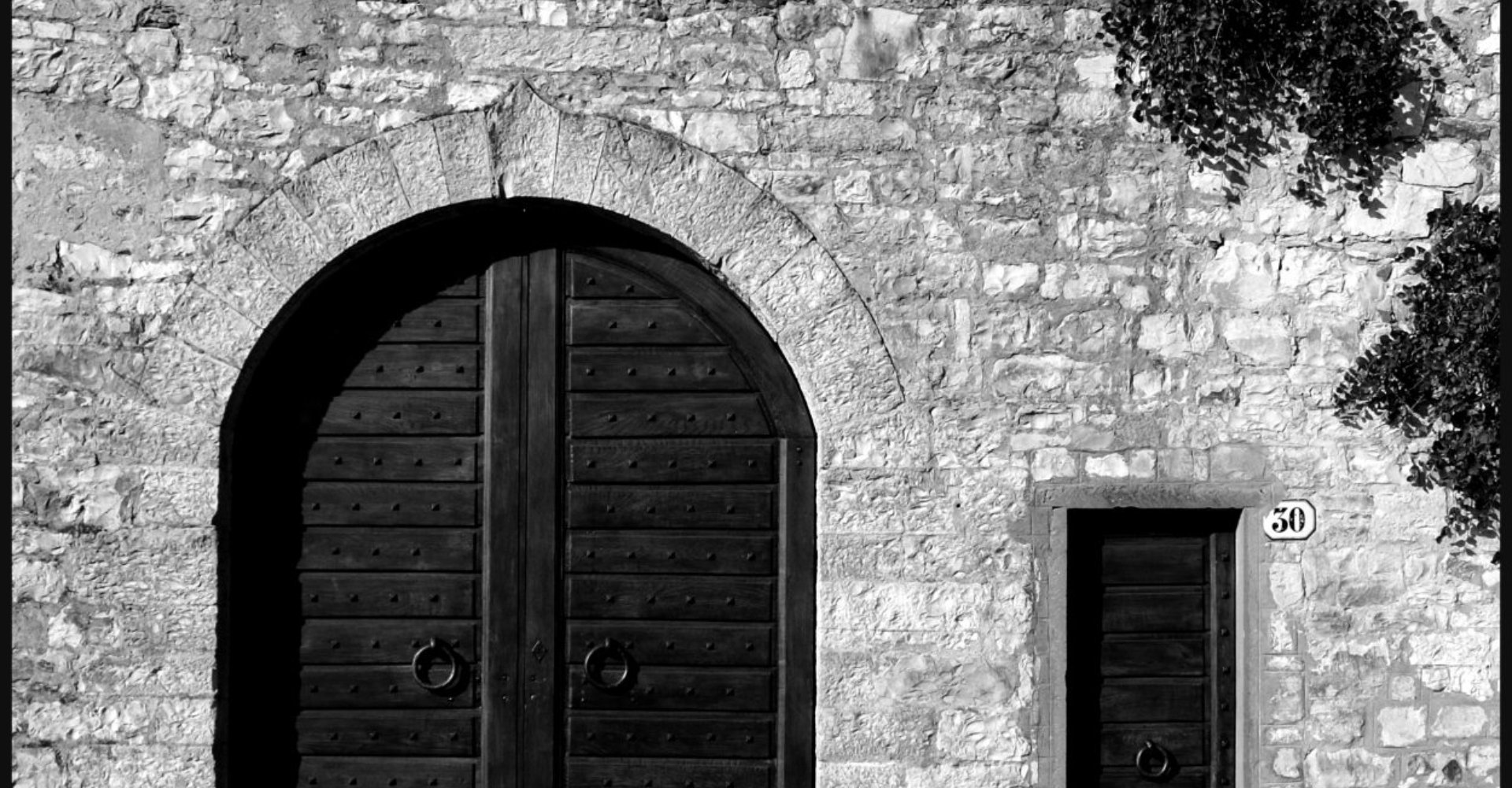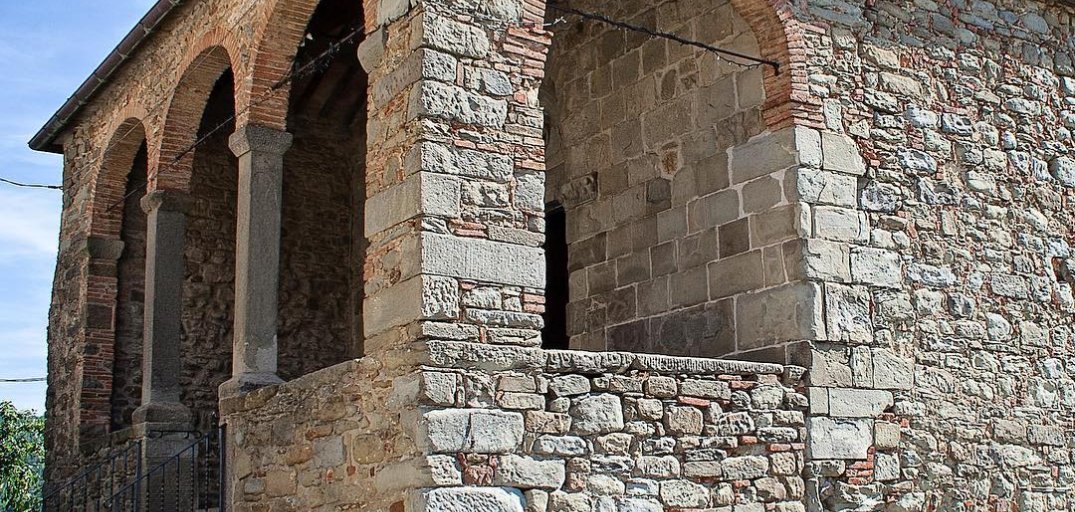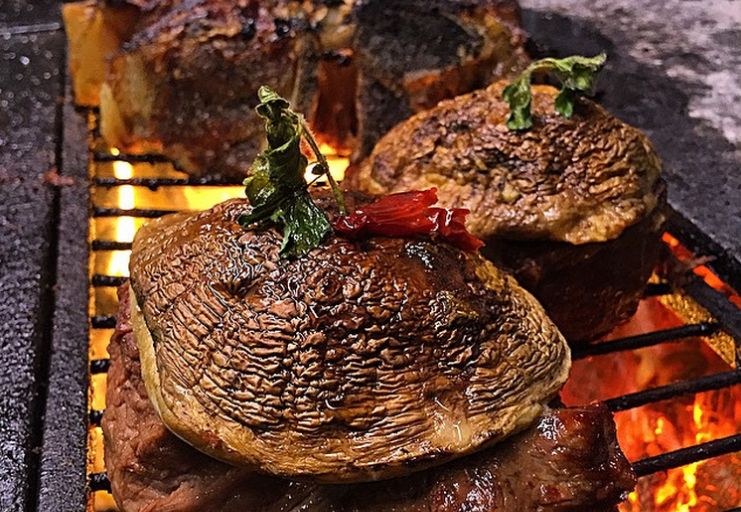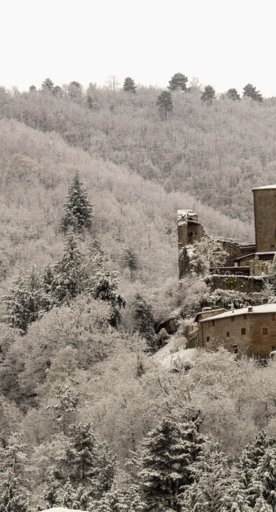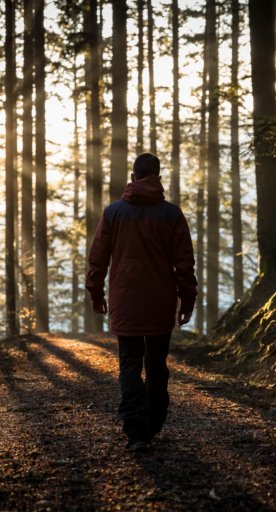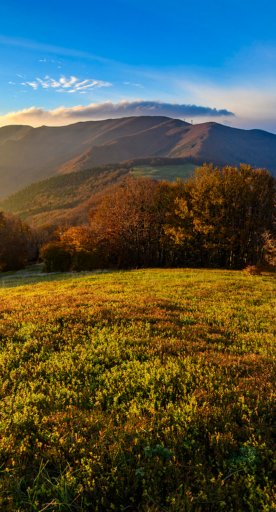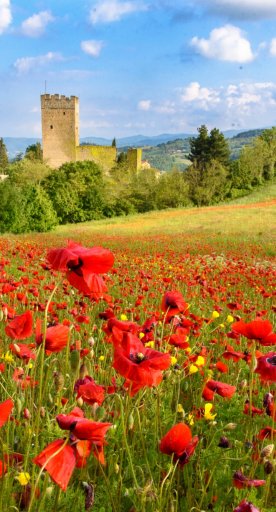Montemignaio
A small village immersed in the lush forests of Casentino
One of the smallest municipalities in the province of Arezzo, Montemignaio conserves its identity and a few traces of the medieval settlement of Castel Leone inside its walls, including some remains of the historic defence wall and one of the two towers that once defended the former feudal outpost. Something that the medieval town and today’s town, Montemignaio, have in common is their total immersion in the forest of oak and chestnut trees, which have always been the greatest resource for the people of this town. Montemignaio is located on the wooded slopes of the Pratomagno, between Mount Secchieta and the Passo della Consuma. From here, you can enjoy a unique view of the terraced landscape.
What to see in Montemignaio
Though small, the town nonetheless is home to one of the most precious treasures in the entire Casentino: the Romanesque Parish Church of Santa Maria Assunta, dating to the 11th century. Through its elegant decoration, the church reflects the distinctive aspects of the local history, which has always gone hand-in-hand with the work in the forest (the capitals are carved in the shape of foliage or depict men engaged in ancient crafts).
Two kilometres from the town, the small Oratory of Santa Maria delle Calle is worth a visit. It was built thanks to the contribution of the many pilgrims who came to venerate an image of the Madonna (believed to be miraculous) contained in a historic tabernacle, the original core of this small place of worship. Visitors can enter the oratory through a three-arched portico, with windows and external prie-dieux.
Though small, the town nonetheless is home to one of the most precious treasures in the entire Casentino: the Romanesque Parish Church of Santa Maria Assunta, dating to the 11th century. Through its elegant decoration, the church reflects the distinctive aspects of the local history, which has always gone hand-in-hand with the work in the forest (the capitals are carved in the shape of foliage or depict men engaged in ancient crafts).
Two kilometres from the town, the small Oratory of Santa Maria delle Calle is worth a visit. It was built thanks to the contribution of the many pilgrims who came to venerate an image of the Madonna (believed to be miraculous) contained in a historic tabernacle, the original core of this small place of worship. Visitors can enter the oratory through a three-arched portico, with windows and external prie-dieux.
Nearby
Casentino remains one of the most fascinating landscapes in Tuscany, not only for its nature, but also because in the past, it was a place that was heavily crossed, where bands of wayfarers travelled through on foot and where some of the most important families decided to settle down – still today, it’s wonderful to look for these traces in the stunning villages that, like Montemignaio, dot these wooded valleys.
Castel San Niccolò, for example, is a widespread village, known for hosting the Biennale of Stonework, an occasion in which it's possible to admire artists and stonemasons. Interestingly, fir trees are highly cultivated throughout this area, destined for a future as Christmas trees.
In nearby Poppi, you'll find the Castle of the Guidi Counts, where Dante Alighieri is said to have composed the 33rd canto of the Inferno of the “Divine Comedy”.
Casentino remains one of the most fascinating landscapes in Tuscany, not only for its nature, but also because in the past, it was a place that was heavily crossed, where bands of wayfarers travelled through on foot and where some of the most important families decided to settle down – still today, it’s wonderful to look for these traces in the stunning villages that, like Montemignaio, dot these wooded valleys.
Castel San Niccolò, for example, is a widespread village, known for hosting the Biennale of Stonework, an occasion in which it's possible to admire artists and stonemasons. Interestingly, fir trees are highly cultivated throughout this area, destined for a future as Christmas trees.
In nearby Poppi, you'll find the Castle of the Guidi Counts, where Dante Alighieri is said to have composed the 33rd canto of the Inferno of the “Divine Comedy”.
Events
In the autumn, Montemignaio hosts the Sagra della polenta, a festival dedicated to cornmeal and chestnut flour polenta. The event brings many food stands to Casentino, where you can taste porchetta, sausages, roasted chestnuts and wine, but also enjoy concerts and exhibitions. Everything takes place around the fiery log that contributes to making the town's atmosphere unique.
In the autumn, Montemignaio hosts the Sagra della polenta, a festival dedicated to cornmeal and chestnut flour polenta. The event brings many food stands to Casentino, where you can taste porchetta, sausages, roasted chestnuts and wine, but also enjoy concerts and exhibitions. Everything takes place around the fiery log that contributes to making the town's atmosphere unique.
Typical dishes and products
In Montemignaio, like all other places in Pratomagno, excellent chestnut flour is produced, a fundamental ingredient for many recipes. The specialty that we absolutely recommend you try is chestnut polenta, also called “pulenda”. Generally combined with fresh cheeses and ricotta, the next day it's cut into slices and roasted on the fire and can be served as a n accompaniment to mushrooms, meat and cold cuts.
In Montemignaio, like all other places in Pratomagno, excellent chestnut flour is produced, a fundamental ingredient for many recipes. The specialty that we absolutely recommend you try is chestnut polenta, also called “pulenda”. Generally combined with fresh cheeses and ricotta, the next day it's cut into slices and roasted on the fire and can be served as a n accompaniment to mushrooms, meat and cold cuts.
